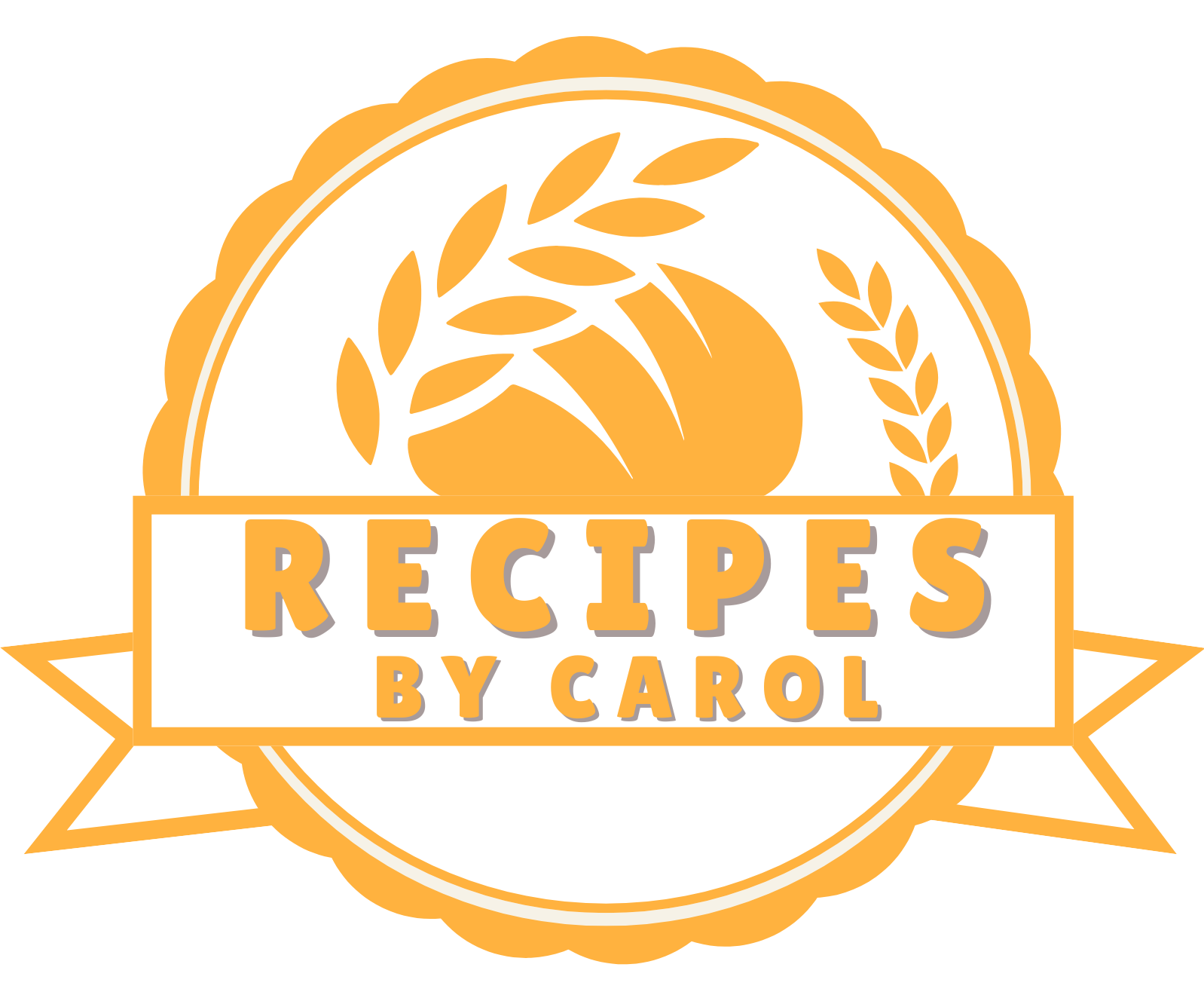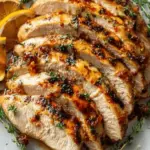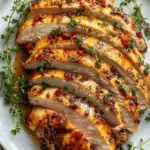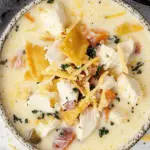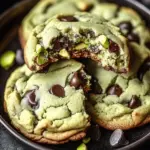The balance of tart rhubarb with silky whipped cheesecake cream is a match made in dessert heaven. These Rhubarb Cheesecake Creams are served in elegant cups, making them the perfect addition to your spring and summer entertaining. Light yet indulgent, they’re a refreshing twist on traditional cheesecake with the added bonus of being no-bake.
Each spoonful offers a luscious mix of fruit compote and airy cream cheese mousse, making this dessert not only beautiful to serve but also incredibly simple to make. Whether you’re preparing them for a dinner party or just treating yourself on a sunny afternoon, these little creams are sure to impress with both flavor and presentation.
Full Recipe:
Ingredients:
-
2 cups chopped rhubarb
-
1/2 cup granulated sugar
-
1 tsp lemon juice
-
1/4 cup water
-
8 oz cream cheese, softened
-
1/2 cup powdered sugar
-
1 cup heavy cream
-
1/2 tsp vanilla extract
-
Graham cracker crumbs, for topping (optional)
Directions:
-
In a small saucepan, combine chopped rhubarb, granulated sugar, lemon juice, and water.
-
Cook over medium heat, stirring often, until the rhubarb breaks down and becomes thick and jammy (about 10–12 minutes). Set aside to cool.
-
In a mixing bowl, beat cream cheese until smooth. Add powdered sugar and vanilla, and mix well.
-
In a separate bowl, whip the heavy cream until stiff peaks form.
-
Gently fold the whipped cream into the cream cheese mixture until fully combined and fluffy.
-
Layer the rhubarb mixture and cheesecake cream into dessert glasses, starting with rhubarb, followed by the cheesecake cream, and repeat layers if desired.
-
Top with graham cracker crumbs if using.
-
Chill in the refrigerator for at least 1 hour before serving for best texture.
Prep Time: 15 minutes | Cooking Time: 12 minutes | Total Time: 27 minutes
Kcal: 285 kcal | Servings: 4 servings
Everything You Need to Know About Rhubarb Cheesecake Creams
A Spring Inspired Delight for Creamy Dessert Lovers
If you’ve never paired the tangy brightness of rhubarb with the creamy richness of cheesecake, you’re in for a truly indulgent surprise. Rhubarb Cheesecake Creams are one of those desserts that feel like a celebration of contrast sharp yet sweet, rich yet refreshing. This dessert brings together the rustic charm of springtime rhubarb and the smooth decadence of a no-bake cheesecake, all layered beautifully in individual cups. Whether you’re looking for an elegant dessert for a dinner party or a simple sweet treat to enjoy on a sunny afternoon, this dish delivers on every front.
In this article, we’ll explore everything about Rhubarb Cheesecake Creams from what makes it special, the unique role rhubarb plays, customization tips, serving suggestions, its origin influence, and the magic behind its layered construction. We’ll also look at why this recipe is perfect for spring and summer, how to adapt it for different dietary needs, and how to present it like a professional patissier.
The Magic of Rhubarb in Desserts
Rhubarb is one of those ingredients that often gets overlooked, yet it offers a distinct tartness that can completely transform a dessert. Technically a vegetable but treated as a fruit in culinary use, rhubarb is most commonly seen in jams, pies, and sauces. Its natural sourness pairs incredibly well with sugar and creamy components, making it a perfect partner for cheesecake.
In Rhubarb Cheesecake Creams, the rhubarb is gently cooked down with sugar into a luscious compote. This process not only softens its tough, fibrous stalks but also balances out its natural acidity. When swirled into or layered with the cheesecake cream, rhubarb adds a layer of complexity that keeps each bite from being too rich or cloying.
It’s also visually stunning. Rhubarb’s pink hue ranging from blush to vibrant fuchsia brings a natural beauty to the dessert that requires no extra adornment. This makes it perfect for events where presentation matters, like bridal showers, spring garden parties, or Mother’s Day celebrations.
Cheesecake Creams: The No-Bake Advantage
Traditional baked cheesecakes are beloved for their dense, creamy textures, but they can also be labor-intensive, and there’s always the risk of cracking. Rhubarb Cheesecake Creams use a no-bake method, which means less stress, faster prep, and a lighter end result.
The base is typically a whipped cream cheese mixture, sometimes stabilized with gelatin or supported with a touch of mascarpone or Greek yogurt. When chilled, this cream firms up just enough to hold its shape while still retaining a soft, mousse-like texture. It offers all the flavor of a classic cheesecake, but with a lightness that pairs beautifully with the bright rhubarb compote.
This no-bake style also opens the door to make ahead convenience. You can prepare these creams a day in advance, allowing you more freedom when hosting. Letting the dessert chill also enhances the flavors as they meld together over time.
Why Layered Desserts Are So Irresistible
There’s a reason parfaits and layered desserts hold such appeal they deliver an exciting variety of textures and flavors with each spoonful. In Rhubarb Cheesecake Creams, each layer plays a role:
-
The graham cracker crumble or cookie base adds crunch and a touch of saltiness.
-
The cheesecake cream provides richness and body.
-
The rhubarb compote cuts through the creaminess with brightness and color.
As you dig in, the spoon effortlessly glides through each layer, scooping up a perfect bite of all three components. This kind of dessert is not only delicious but also interactive, creating a sensory experience that engages taste, texture, and visual appeal.
Perfect for Seasonal and Local Cooking
Rhubarb has a short growing season typically from April to June making it a seasonal favorite among home cooks and professional chefs alike. Using it in your cooking is a great way to embrace seasonal eating, which is not only eco-friendly but also yields more flavorful results.
If you have access to a local farmer’s market or garden, fresh rhubarb is ideal. It’s often sold in stalks, and you should avoid eating the leaves, which are toxic. When selecting rhubarb, look for firm, crisp stalks with a bright pink color. This means it’s fresh and will offer the best flavor and texture.
Customizing Your Rhubarb Cheesecake Creams
One of the best things about this recipe is how adaptable it is. While the classic version is hard to beat, here are a few variations you can try:
-
Gluten-Free: Use gluten-free graham crackers or crushed nuts for the base.
-
Vegan: Substitute with dairy-free cream cheese and whipped coconut cream. Use maple syrup instead of honey or traditional sugar.
-
Low-Sugar: Use a natural sweetener like stevia, monk fruit, or erythritol, especially in the cream cheese layer and rhubarb compote.
-
Berry Boost: Add strawberries or raspberries to the rhubarb compote to mellow the tartness and add even more depth.
-
Herbal Twist: Try infusing your rhubarb compote with a sprig of rosemary, basil, or mint during cooking for a hint of herbal freshness.
How to Serve and Present It
Presentation matters, especially with layered desserts. Rhubarb Cheesecake Creams look best served in clear glass cups, mason jars, or dessert tumblers where each layer can be proudly displayed.
Top with a sprig of mint or a few shaved white chocolate curls for added elegance. A small edible flower, like a viola or pansy, can also elevate the look, especially for spring-themed events.
If you’re serving at a buffet or picnic, use small plastic dessert cups with lids for easy transport and minimal mess. For a plated dessert, serve alongside a shortbread cookie and a dusting of powdered sugar.
Why It Works for All Occasions
Rhubarb Cheesecake Creams strike a rare balance: they’re casual enough for an everyday dessert, but elegant enough for special occasions. Their portioned format makes them ideal for individual servings at events, reducing the need for slicing and cleanup.
They’re also beloved by both adults and children. The cheesecake layer is creamy without being overly sweet, while the rhubarb keeps things light and refreshing. They don’t sit heavy in the stomach, making them a pleasant end to any meal.
Whether it’s brunch, Easter dinner, baby showers, or summer BBQs, this dessert fits seamlessly into your menu.
Healthier Than It Looks
Despite its decadent appearance, this dessert can be made with ingredients that fit a more balanced lifestyle. Use low-fat cream cheese or Greek yogurt for added protein. Rhubarb itself is low in calories and high in fiber, and when paired with moderate sugar and healthy fats from the crust, this dessert becomes a more wholesome indulgence.
Of course, it’s still a dessert, but it’s one that doesn’t leave you feeling weighed down or guilty after enjoying it.
A Dessert with a Story
Rhubarb has deep roots in British and European cooking, where it has long been used in pies, crumbles, and jams. Pairing it with cheesecake a dish that originates from ancient Greece and evolved through European culinary traditions creates a dessert that brings together different cultural histories into one beautiful cup.
It’s a dish with depth, both in flavor and background. And when made with care, it tells a story of seasonal bounty, comfort, and elegance.
Conclusion:
In a world full of overly complicated desserts, Rhubarb Cheesecake Creams remind us that simplicity often leads to the most delicious results. With just a handful of seasonal ingredients and a little bit of love, you can create a dish that looks stunning, tastes divine, and feels like spring in a cup.
Whether you’re a seasoned home baker or a curious beginner, this recipe will quickly become one of your go to favorites. It checks every box: ease, beauty, flavor, and versatility. And once you try it, you’ll wonder how you ever lived without that perfect balance of tart rhubarb and creamy cheesecake.
So next time you spot fresh rhubarb at the market or even better, in your backyard bring it home and treat yourself and your guests to something truly special.
